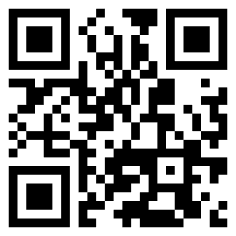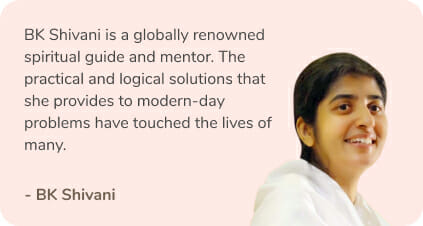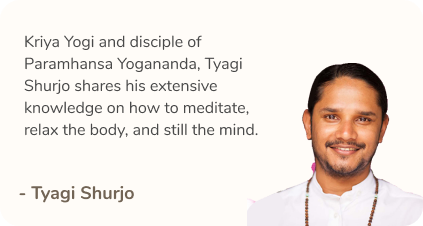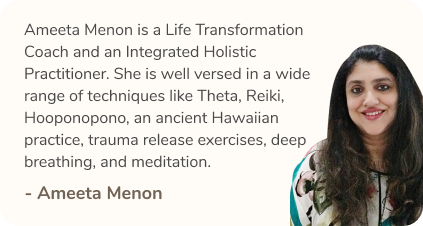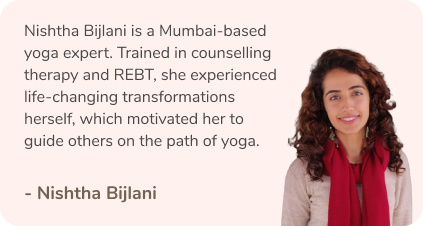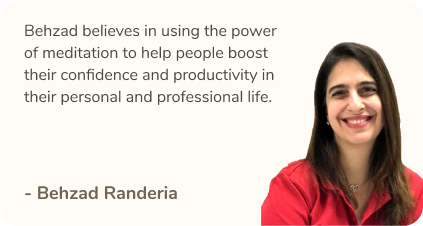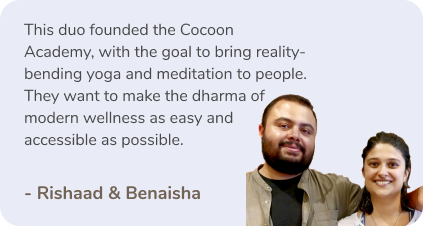Most of the time we’re so caught up in our day-to-day lives that we don’t recognize the stress stored in our bodies. It translates into headaches, back and shoulder pain, and tense muscles due to a stressed emotional state. By developing greater awareness of your bodily sensations, you can feel more connected to your physical self and gain greater insight into potential causes of unwanted feelings. This can help you address what’s wrong, leading to stress relief for improved mind and body wellbeing.
Why Should You Practice Body Scan Meditation?
The benefits of meditation are umpteen. Mindfulness practices can vastly improve quality of life and researchers and experts have found that body scan meditation can promote overall wellness through multiple ways:
1. Improved sleep
2. Anxiety & stress relief
3. Greater self-awareness
4. Increased self-compassion
5. Reduced pain
6. Reduced cravings when quitting smoking
7. Greater ability to cope with unwanted emotions
8. Improved focus
9. Increased compassion and other positive emotions
10. Reduced symptoms of post-traumatic stress disorder
How to Practice Body Scan Meditation for Stress Relief?
Body scan meditations follow a basic pattern which is very easy to follow:

1. Get in position
Get comfortable on the floor or in a chair and gently lower your eyes. You can even lie down, as long as you don’t fall asleep.
2. Focus on the sensations in your body
Notice your position, sitting or lying down. Feel the weight of your body on the floor or in the chair and take a few deep, cleansing breaths.
3. Move your attention through your body
Begin with your feet and slowly progress upwards – through your legs, shoulders, arms, and neck – until you reach the crown of your head. At each body part, halt for a couple of seconds and notice the sensations coursing through that part; whether it feels tensed, relaxed, tingling, or painful. It’s completely fine if you don’t sense strong sensations, simply notice how it feels.
4. When your attention wanders, take notice and return to the body scan
Just like with any other type of meditation, your focus can wander easily. Don’t fret over it. When it does, acknowledge it and gently bring yourself back to the present, focusing on the specific body part. As you move from body part to body part, release your mental awareness of the previous part before moving to the next area of focus. You can imagine releasing as you breathe out and moving on as you breathe in.
5. Take in your body as a whole
After you’ve moved through your body part by part, in order or randomly (both are okay), spend a few moments to notice your body as a whole. Take a few deep, cleansing breaths and slowly open your eyes to finish the meditation.
When Should You Practice a Body Scan Meditation?
Practice a body scan meditation anytime you feel stress or several times throughout the day as a regular practice.
If you’re short on time or are in the middle of something but feeling stress or pain in your body, you can practice a shorter version of the meditation by noticing the body part that feels tensed rather than moving part by part. This is something you can easily do at your desk in your office or on your commute home.
Body scans can especially help when you’re in the middle of a panic episode as it can have a positive overall reduction in stress and decrease the body’s cortisol levels. Doing a full body scan can help you be mindful of your body and redirect your thoughts.
Bottom Line
Everybody starts meditation with a specific goal in mind; stress relief, to get better relaxation, improved sleep or focus, and much more. But always remember, if you go into the practice with set goals, you might feel too focused on trying to achieve them while failing to focus on the sensations in your body. It’s easier to go with one simple goal; learning more about your body and what it has to say.
Read more: 7 Restaurants Offering Delicious Onam Sadhya Feasts in India
Like & Follow ThinkRight.me on Facebook, Instagram, Twitter, and Telegram to stay connected.

